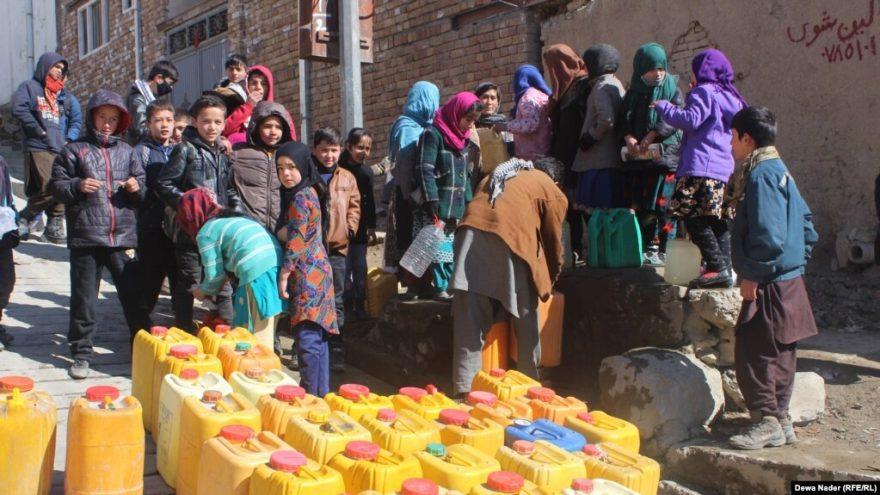
Water Crisis In Kabul: Taimani Project Residents Concerned About Drinking Water Shortage
Aseel, a resident of the Taimani Project, told Khaama Press that the lack of water, coupled with economic problems, has caused him difficulties.
He says,“The lowering of the water table has caused our deep well to dry up, leaving us without access to water.”
According to him, people in this area have always tried to meet their water needs by digging private wells in their homes over the years. However, the water level has dropped so much that many can no longer deepen their wells.
Aseel adds,“Now, accessing water is difficult for me, with several small children, and I have to travel kilometers away from home to fetch water.”
According to him, if he does not travel kilometers away from his home to get water, he is forced to buy it, which is challenging due to economic problems and unemployment.
Meanwhile, Parwana, another resident of Second Road, Taimani Project, says,“The water in the Taimani Project area is not drinkable because it is entirely salty, and getting fresh water requires more money because the water level is low.”
Parwana says,“We buy water for drinking, but we use salty water for other purposes, and we are worried about skin problems because of the excessive salt in the water.”
Bilal, a resident of First Road, Taimani Project, says,“We have been digging a well with modern equipment for more than ten days, but there is no sign of water.”
Qari Mutiullah Abed, a spokesperson for the Ministry of Energy and Water, told Khaama Press,“Since there is a shortage of drinking water in different parts of Kabul city, the Ministry of Energy and Water has short-term and long-term plans in place, including transferring Panjshir water to Kabul, and the Shatoot Dam and the Shah and Arous Dam to Kabul are among the ministry's long-term plans.”
According to Mr. Abed,“The short-term plan includes transferring water from areas with the most water to areas suffering from water shortages, creating absorption wells, and working on water storage has also begun.”
Alongside water shortages in various parts of the country, the spokesperson of this ministry has asked people to pay attention to water consumption and emphasize creating absorption wells, which help store water.
The water crisis in the country arose when the United Nations Development Program previously expressed concern about the severe drinking water shortage in Afghanistan in a statement issued on Earth Day.
This organization says 79 percent of families in Afghanistan do not have access to drinking water.
The ongoing water crisis in Afghanistan is a multifaceted issue exacerbated by climate change, economic hardships, and infrastructure challenges.
While the government is initiating measures to address water shortages, immediate and coordinated efforts are needed to alleviate the situation for affected communities.
Increased awareness and strategic planning are vital to ensure sustainable water management and long-term access to clean water for Afghan families, potentially alleviating the broader humanitarian challenges faced by the country.
ShareFacebook Twitter WhatsApp Email Print Telegram
Legal Disclaimer:
MENAFN provides the
information “as is” without warranty of any kind. We do not accept
any responsibility or liability for the accuracy, content, images,
videos, licenses, completeness, legality, or reliability of the information
contained in this article. If you have any complaints or copyright
issues related to this article, kindly contact the provider above.


















Comments
No comment